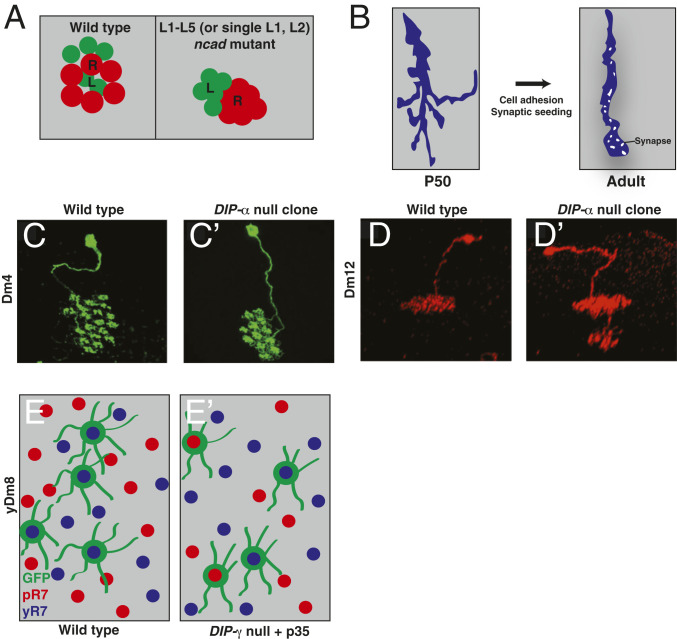Fig. 4.
Cell adhesion molecules promote different aspects of nervous system assembly. (A) In the Drosophila lamina, differential adhesion promoted by high levels of NCad (lamina neurons [L]; green) or lower levels (photoreceptors [R]; red) directs lamina and neurons to their appropriate positions within a cartridge, internal for lamina neurons, periphery for photoreceptors. NCad mutants (Right) push lamina neurons from the cartridge center to the periphery. (B) Filopodial extensions from Drosophila photoreceptor axons are highly dynamic and explore their surroundings during pupation (Left). Later, cell adhesion molecules and synaptic components exponentially increase the stability of the axon, leading to column refinement and synaptogenesis (Right). (C–E) IgSF-containing DIPs/Dprs promote synaptogenesis by promoting adhesion between synaptic partners. DIP-mutant neurites target fewer columns (C and C′), target inappropriate sublayers (D and D′), or target the incorrect partners (E and E′). C, C', D, and D' are reprinted from ref. 161, with permission from Elsevier. E and E' are adapted from ref. 92, with permission from AAAS. GFP, green fluorescent protein; P50, 50% pupariation; pR7, pale photoreceptor R7; yR7, yellow photoreceptor R7.

